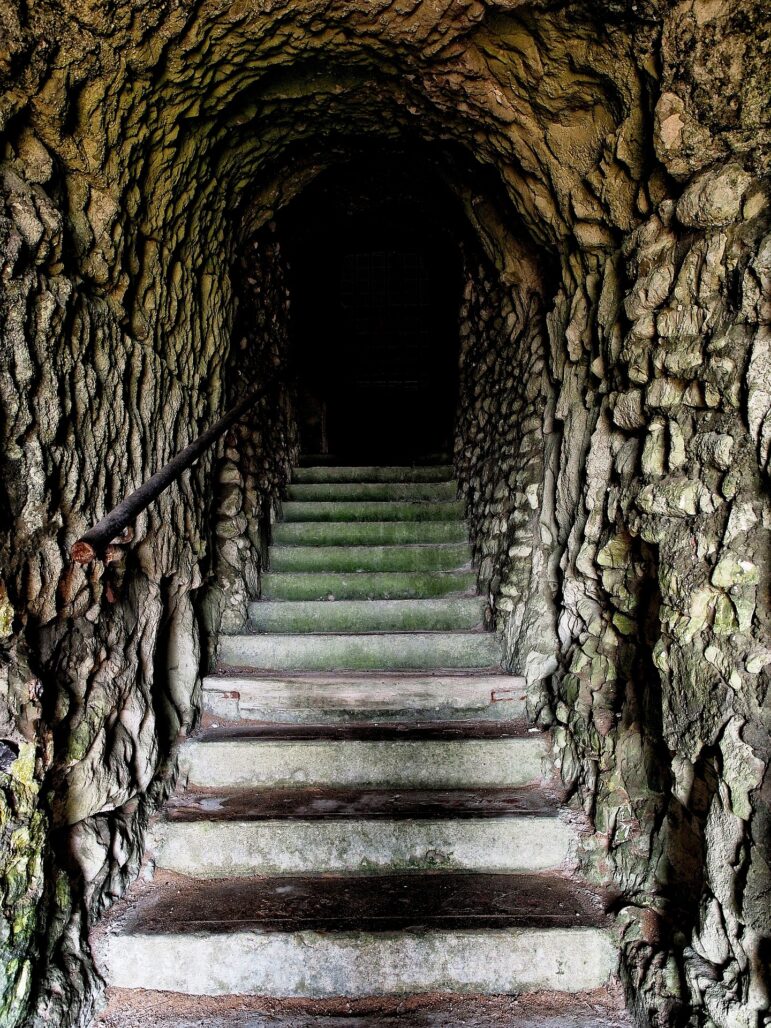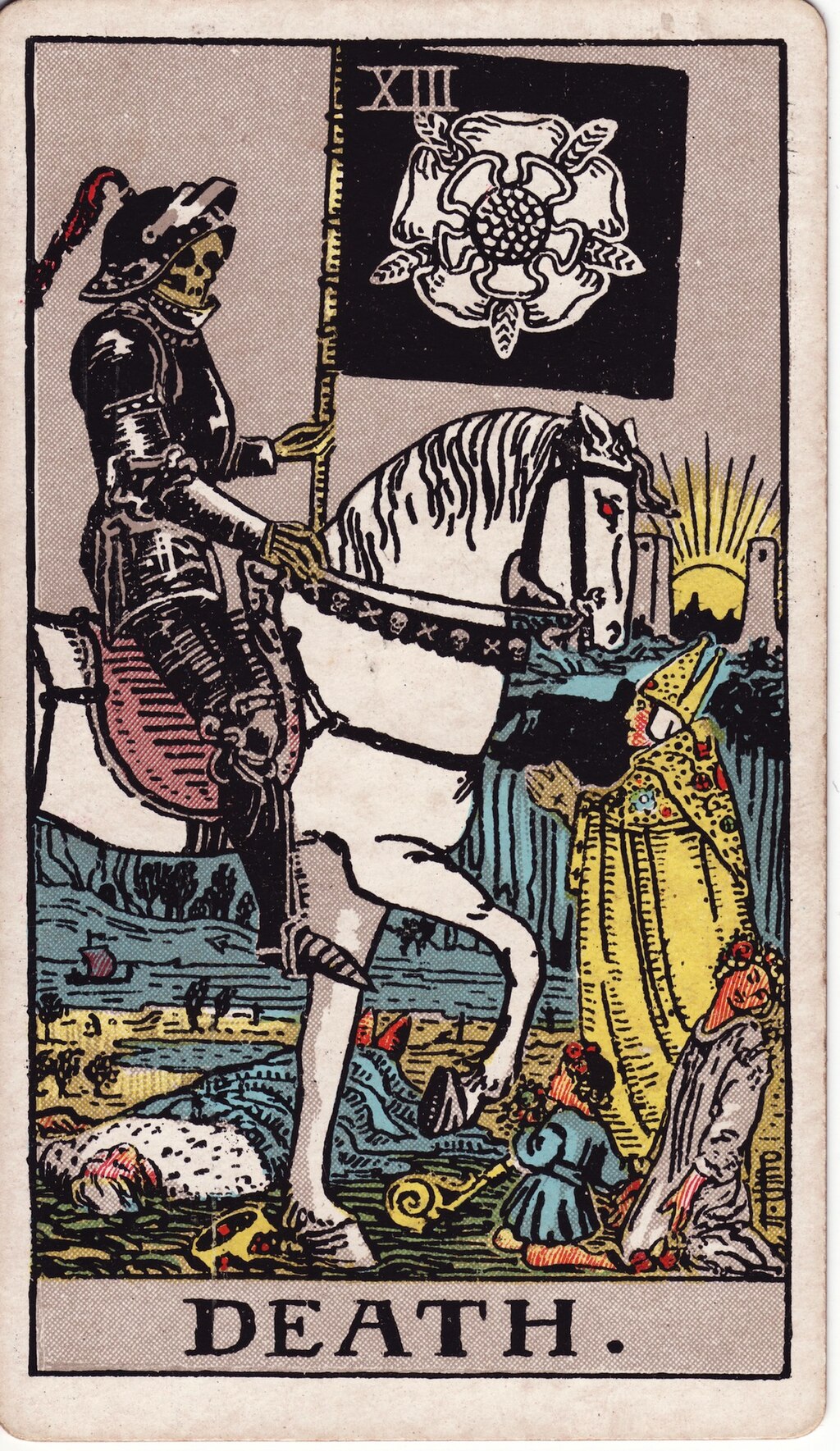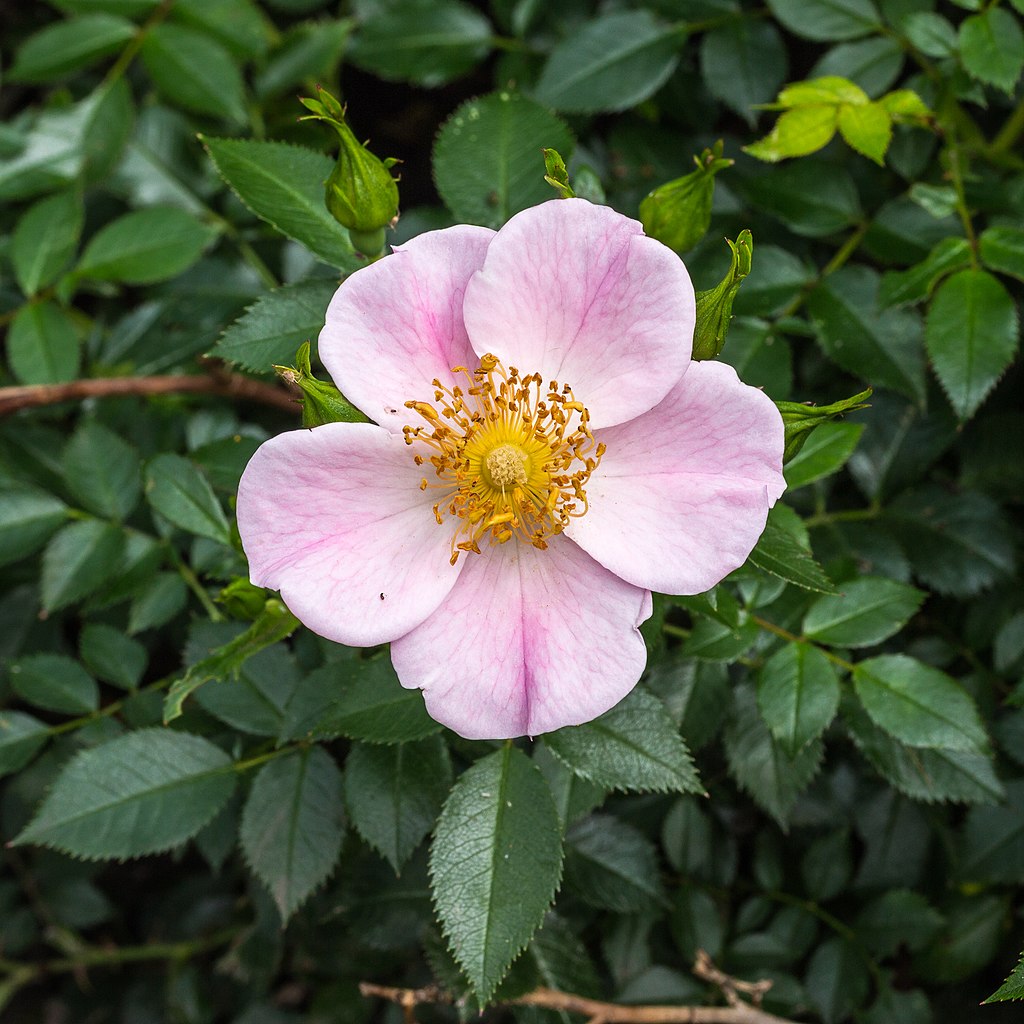
We enter life with one-way ticket to the end of the line.
If we are lucky, we ride with reckless abandon, experiencing thrills of exploring the unknown in what we see, taste, feel, hear, and smell. Whether we like it or not, our condition in human form is all about the journey, fueled by oxygen, nourished by water, and sustained by food. We cannot live for long without oxygen. Like the fuel tank in our motorized vehicles, with hypoxia, we’re at the E and we need to find a way to re-fuel with oxygen desperately. When we go so far past the E that we feel the last gasps of the car, we’ve reached a state of anoxia – no oxygen, no point of return. We’re done.

Path to the Underworld
In Joseph Campbell‘s PBS special with Bill Moyers, Joseph Campbell and the Power of Myth – the Hero’s Adventure, Campbell remarks: “We go from the tomb to the womb (of Mother Earth) to be reborn.” As a Pagan, I take this as a reminder that we end life only to start again. The cycle continues.
For many, the current state of economic affairs globally has a tinge of hypoxia. We are not at a point of no return, but we are hanging on a cliff with all appendages and extensions grasping for firm, solid ground as solace. Death, in its literal sense is both finite and a continuous mystery.
Each day, we make choices as human beings as to what we can, should, or would let go. Sometimes these choices, the tiny absences that we do not acknowledge as “death”, but which affect us nonetheless are easy ones. When hard times hit financially, individuals and families will look at where to cut back. The questions of what do we need for pure survival versus what do we want come into play. Perhaps we will seek recipes or tips from friends, family, and elders on how to stretch a food item to make it last longer, how to freeze what is cooked to use over a week or two, or how to use less expensive food materials that are new to us.
A whole generation gets to see what was done during the Great Depression from grandparents and great-grandparents whose wisdom is now passed down on TikTok and YouTube. Neighborhood gardens, once called Victory Gardens during the World Wars, and Recession Gardens around 2008, flourish in 2025 precisely because as humans, we need to act as a means of survival. As humans, we are built for the ride, and when functioning appropriately, barring illness either mental or physical, we try to avoid until the last possible second, the finality of death.

The Death card from the Rider-Waite-Colman Smith tarot deck [public domain]
In the Rider-Waite-Colman Smith tarot deck system, Death is the 13th card. While the images vary, the emphasis of the card is on change, transition. Within the span of the Fool’s Journey from zero to 22, this is just past the half way point. It is asking us to accept the end to something. In the mundane world, perhaps it indicates a job change, a way of life that no longer suits the human being one has become, or an idea that has run its course. In exchange, there is the opening, the light at the end of the tunnel, or the window that is open if only we can see it and accept its meaning and consequences.
The challenge of Death is the challenge to acknowledge and to understand ourselves on a deeper level. We do not seek the transformation at times because it comes seemingly out of the blue, unexpected, and a true wake up call. As humans, such as call is a type of death as the oxygen we give to certain parts of our lives can be so demanding that until we are forced to acknowledge the need to change, we do not realize that our supply is gone, and we no longer can breathe.
At times, the card Death is a literal death. When I first starting to read tarot, I went through the phase of being frightened when this card would appear. While it almost never meant a physical death, I learned to not discount that as a possibility as a .00001% chance. I have come to see its appearance as a blessing, a gift, that allows one to prepare for a change that one doesn’t see coming – be it a physical or metaphorical or emotional death.
Death is a disintegration of the old in favor of the true. Who are we, what are we, where are we, why are we, and how are we in this lifetime? We can ask the same of our ancestors and ancients, just as our children and descendants will ask the same of us.
Do we live our lives as our true selves or as masked within whatever physical, emotional, psychological, intellectual, or financial traps that surround us?
Do we know that we have a choice, even if it is not one we want or prefer?
This month, Death, is a struggle for many. While April Fool’s Day is seen as a day for jokes, pranks, and laughter, April 2 was no joke. Called “Liberation Day” by the Trump administration, the United States stock markets began a dive on April 3 that continues, covering many in a panic and media outlets posting articles reminding people that things could be much worse, as a reflection of the 1929 Wall Street crash that ushered in the period of the Great Depression.
Yet, even as we struggle with job losses, the reality for many Americans of what to do in a world that whirls in a chaotic spin between tariffs trade wars, the alienation of close allies, rising prices for everyday goods and services, we have choices.
We are human. If this is a type of death, we still have oxygen.
When other humans remind us to wake up, to resist, to be aware – we gain oxygen. On April 2, the same day that seemed the complete opposite of liberation, Pussy Riot screamed at us in New York City to wake up, to resist the slide into authoritarianism that they see in American society, we gain oxygen. When hundreds gather to protest in various sites across the United States in the mass “Hands Off!”movement, we gain oxygen.
We see the hypoxia: a descent where there is an attempt to bring a reality of absolute power to control and eliminate dissent, to encourage a rise in propaganda and elimination of news sources that erase other truths than what is preferred, and eventually to use the surveillance to rid the country of so called enemies or those who do not align with the government’s goals such as the trend of disappearances for certain international academic visa holders without explanation – we see the hypoxia and we fight for oxygen.
We gain oxygen by finding and maintaining awareness.
We gain oxygen by allowing ourselves the transformation that we might fear, but that we know is what will work for ourselves.
We gain oxygen by understanding that there is a post-traumatic transformation.
We gain oxygen by embracing the new horizon.
We gain oxygen by resisting the system and its calls to submit.
We gain oxygen by listening to ourselves.
We gain oxygen by reminding ourselves that our lives as human evokes our character, our higher nature, and our ability to survive.

Life- in a Rose from Rosa ‘Pea Haag’ Agnes Monkelbaan, CC BY-SA 4.0 <https://creativecommons.org/licenses/by-sa/4.0>, via Wikimedia Commons
Death is about the transition, leaving behind what we do not need, and grasping firmly on what we need.
If our life evokes our character, our higher nature, then what we do at this time does matter. As we remember who we are, what we fight for, and what these moments mean, we choose – let the hypoxia become anoxia, or let our lungs breathe in the oxygen fully – to live.
The Wild Hunt is not responsible for links to external content.
To join a conversation on this post:
Visit our The Wild Hunt subreddit! Point your favorite browser to https://www.reddit.com/r/The_Wild_Hunt_News/, then click “JOIN”. Make sure to click the bell, too, to be notified of new articles posted to our subreddit.